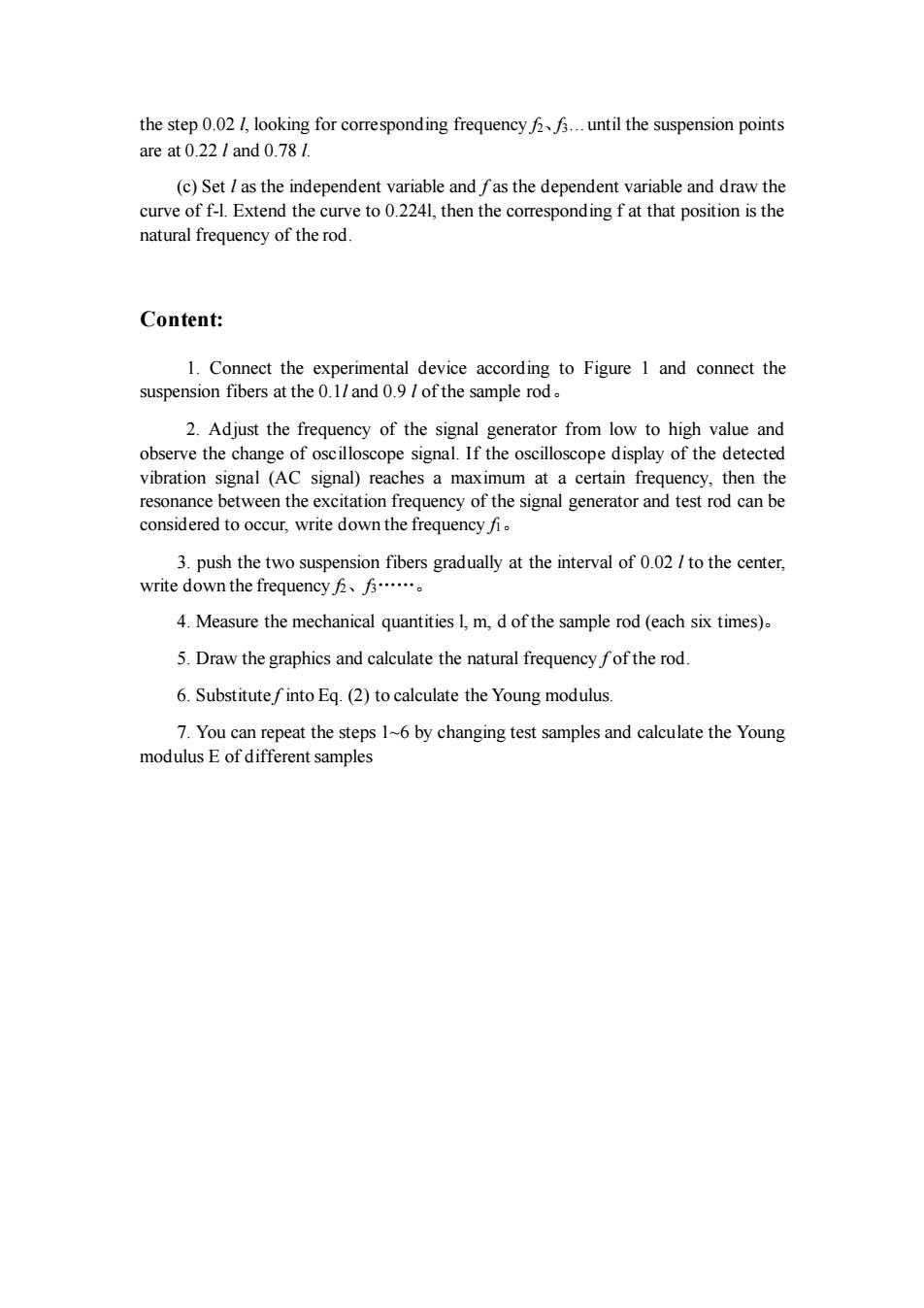正在加载图片...

the step 0.02 I,looking for corresponding frequency f33...until the suspension points are at 0.22 and 0.78 1. (c)Set as the independent variable and fas the dependent variable and draw the curve of f-I.Extend the curve to 0.2241,then the corresponding f at that position is the natural frequency of the rod. Content: 1.Connect the experimental device according to Figure 1 and connect the suspension fibers at the 0.1/and 0.9 of the sample rod. 2.Adjust the frequency of the signal generator from low to high value and observe the change of oscilloscope signal.If the oscilloscope display of the detected vibration signal (AC signal)reaches a maximum at a certain frequency,then the resonance between the excitation frequency of the signal generator and test rod can be considered to occur,write down the frequency fi. 3.push the two suspension fibers gradually at the interval of 0.02 to the center, write down the frequency、…。 4.Measure the mechanical quantities 1,m,d of the sample rod (each six times). 5.Draw the graphics and calculate the natural frequency fof the rod. 6.Substitute f into Eq.(2)to calculate the Young modulus. 7.You can repeat the steps 1~6 by changing test samples and calculate the Young modulus E of different samplesthe step 0.02 l, looking for corresponding frequency f2、f3…until the suspension points are at 0.22 l and 0.78 l. (c) Set l as the independent variable and f as the dependent variable and draw the curve of f-l. Extend the curve to 0.224l, then the corresponding f at that position is the natural frequency of the rod. Content: 1. Connect the experimental device according to Figure 1 and connect the suspension fibers at the 0.1l and 0.9 l of the sample rod。 2. Adjust the frequency of the signal generator from low to high value and observe the change of oscilloscope signal. If the oscilloscope display of the detected vibration signal (AC signal) reaches a maximum at a certain frequency, then the resonance between the excitation frequency of the signal generator and test rod can be considered to occur, write down the frequency f1。 3. push the two suspension fibers gradually at the interval of 0.02 l to the center, write down the frequency f2、f3……。 4. Measure the mechanical quantities l, m, d of the sample rod (each six times)。 5. Draw the graphics and calculate the natural frequency f of the rod. 6. Substitute f into Eq. (2) to calculate the Young modulus. 7. You can repeat the steps 1~6 by changing test samples and calculate the Young modulus E of different samples